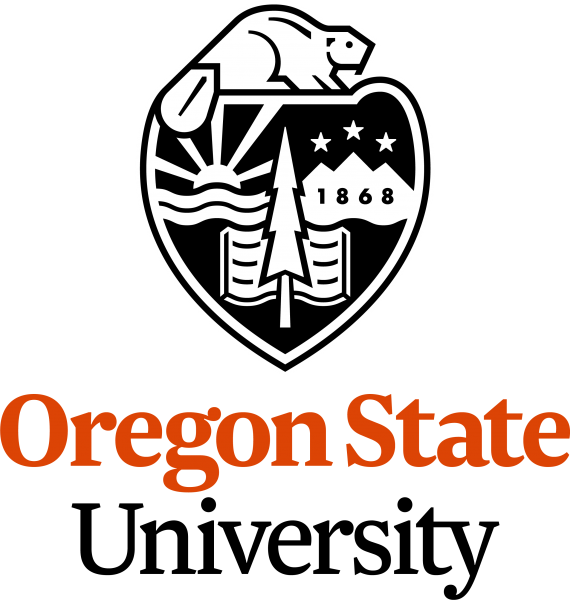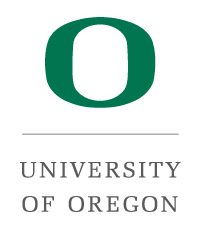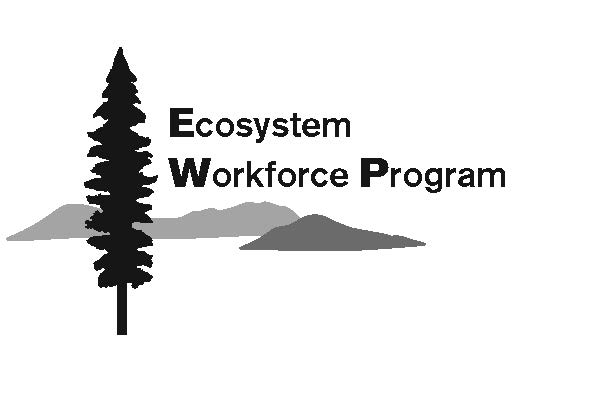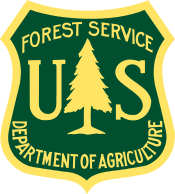Partner Feeds
Additional Reductions in Evacuation Levels - Klondike Fire West Zone (Klondike Fire Wildfire)
A win-win: School gets energy-efficient wood heating, DNR pilots bioenergy in a public building
Northport School District Superintendent Don Baribault had an expensive problem on his hands: An old diesel boiler in the preschool-through-eighth-grade building on the Northport Elementary/Middle/High School campus was failing. It needed constant maintenance, but the district didn’t have the budget to upgrade its heating system.
Then the district received a call from the Washington State University Energy Program, inquiring if the district had an interest in some grant money to install wood energy at the school through a state-funded bioenergy pilot program. It would be the first time the state installed a wood pellet boiler for a public building.
“It was not only greener, but it was a long-term cost savings,” Baribault said. The school district agreed to the project, and after a couple years of planning, crews installed the boiler this week.
The 340 MBH biomass boiler in Northport is expected to use about 70 tons of wood pellets, displacing about 8,500 gallons of fuel oil per year. (Wisewood Energy photo)The campus serves about 200 students, and Baribault said they have all enjoyed watching the project unfold.
The boiler system was installed in a shipping container and placed alongside a 24-foot-tall silo that can hold 30 tons of wood pellets. As crews used a crane to install the system, some of the younger kids at recess asked if they were getting a spaceship, Baribault said. Older students and the staff appreciate that they are getting a heating system that is more energy efficient and better for the environment.
“To be able to do that on a grant was pretty cool,” he said.
The boiler is heating two buildings on the campus: the building for preschool through eighth grade, and the building that houses the gymnasium and cafeteria. In addition to installing the biomass system, the project also included integrating the heating systems for the two buildings.
Energy efficient, low carbon
Using wood pellets or wood chips to displace oil for heating is one of the best, low carbon examples of modern wood energy. These wood fuels are made from the byproducts of timber or forest restoration activities, and when used in a highly efficient system such as Northport’s new boiler, the amount of carbon emitted during combustion is recaptured by tree growth in a short period of time, if not immediately.
At Northport, the boiler requires 70 tons of wood pellets a year, and it has an estimated 85 percent efficiency rating, meaning 15 percent of the energy burned is lost while the remaining 85 percent becomes heat.
The new heating system is expected to save the school district approximately $10,000 a year – and even more if the price of oil rises, according to Wisewood Energy, the Portland-based biomass energy developer that led the project’s construction and final design.
Here’s how the 340 MBH (100 kW) boiler works:
- Pellets are conveyed from the nearby silo to the boiler as needed, where they are burned to heat water.
- The hot water travels to three thermal storage tanks, which combined can hold 1,085 gallons of water.
- The system dispatches hot water from the tanks as needed to heat the buildings.
- As hot water leaves the thermal tanks, it passes through an oil boiler in the gym, which was retained to serve as a backup and supplemental heat source for the wood pellet boiler.
- If the backup boiler senses that the water coming from the thermal storage tanks is too cold, it will kick in to assist.
“The biomass boiler was sized to be able to provide approximately 95 percent of the school’s heat demand,” said Meagan Hartman of Wisewood Energy. “The gymnasium’s existing oil boiler will provide the remaining 5 percent, which will occur during peak demand and shoulder seasons.”
Building and installing the new boiler, and integrating it into the backup system, cost about $400,000, Nuss said.
Wood chip heating in Forks
The Northport project is the first time Washington state has funded the installation of a wood pellet boiler to heat a public facility, but it’s not the first biomass energy project supported by the Washington State Wood Energy Team.
In 2010, the Quillayute Valley School District installed a biomass boiler at Fork High School that runs on wood chips rather than pellets. Funding for the $2.6 million project (which included a new building and a heating and cooling system), was provided by a $1 million state grant and a $1.6 million local school bond.
That boiler runs 24/7 from November to May, heating the school facilities, providing hot water, and creating less stress for maintenance staff. At the time of installation, the wood system cost half as much as diesel to operate.
Read more about that project here.
The building that houses the wood chip boiler for Forks Middle School and Forks High School.
Did you know?
Today is National Bioenergy Day, and this week is George Geissler . Across the country today, communities are highlighting the ecological, social, and economic benefits of a locally sourced renewable wood energy industry.
North Fork John Day Ranger District implements prescribed burn (2018 Umatilla NF Prescribed Fire Prescribed Fire)
10/24/2018 Klondike Fire Update (Klondike Fire Wildfire)
10/23/2018 Klondike Fire Update (Klondike Fire Wildfire)
10/22/2018 Klondike Fire Update (Klondike Fire Wildfire)
10/21/2018 Klondike Fire Update (Klondike Fire Wildfire)
10/20/2018 Klondike Fire Update (Klondike Fire Wildfire)
Discover Teanaway: Developing a Recreation Plan for the State’s First Community Forest
Fall has settled in across Washington and nowhere is that more evident than beneath the trees in Teanaway Community Forest.
The sun cast a warm glow across the landscape through a kaleidoscope of yellow, red, and fiery orange leaves on Friday afternoon for gathering members of the Teanaway Community Forest Advisory Committee.
Over the past 18 months, the departments of Natural Resources (DNR) and Fish and Wildlife (WDFW) and the committee developed a supplemental recreation plan for Teanaway to be included in the community forest’s management plan developed in 2015.
The recreation plan puts opportunity on the page for hiking, camping, mountain biking, horseback riding, scenic driving, and motorcycling, as well as fishing, hunting, and nature activities. It will serve as a guide for the management of recreation and public access in the Teanaway over the next 15 years.
On Oct. 24, the plan will enter a two-week State Environmental Policy Act (SEPA) comment period—one of the final steps in the development process. The agencies and committee anticipate adopting the recreation plan in early December.
“The Teanaway is a special place that means a lot to people – that was evident throughout the planning process,” said Commissioner of Public Lands Hilary Franz. “They’ve helped develop an environmentally responsible recreation plan that will shape family and outdoor adventures in the Teanaway for generations to come.”
Commissioner Franz leads DNR in managing 1,100 miles of trails and 160-plus recreation sites in 3 million acres of working forest state trust lands and 92 natural areas.
As more members of the committee arrived to talk about the final phases of the recreation plan, two riders saddled up their gaited horses for an afternoon ride and a family returned from a hike along the Middle Fork Teanaway River with their dogs. Even on a workday, people found time to escape into Teanaway.
Teanaway has a long history of impact for generations of humans who have looked to it as a jewel in Central Washington—there is evidence of Native Americans inhabiting the area 11,500 years ago.
In 2013, the state legislature established Teanaway as the state’s first community forest. The advisory committee assembled to assist DNR and DFW in developing a management plan. They completed the plan in 2015—though it didn’t include a recreation plan yet. Everyone decided that would take a little more time to get right.
“So many people have a tie to the Teanaway and everyone who comes here just falls in love with it,” Larry Leach, Southeast Region assistant manager, said. “Making this place a better forest—and that includes everything in the forest—that’s what’s rewarding and why we put so much effort into this.”
The agencies and committee spent 18 months listening to extensive community input and developing a plan that identified recreation opportunities that were compatible with the priority of conservation and restoration of the upper Yakima Basin as part of the Yakima Basin Integrated Water Resource Management Plan.
“It’s been a remarkable group of 20 of us who come from many different walks of life and many interest areas,” Martha Wyckoff, neighboring landowner and committee member, said. “We’re not all of one like mind but we’ve come to find the civic process to be very rewarding. We worked well together to serve the community, serve the forest, and create a plan that we believe will be great for this community for the next 15 of years.”
Throughout the process, one thing became abundantly clear: People love and care deeply for Teanaway.
In the summer of 2017, more than 2,600 people participated in a survey to provide input and ideas regarding recreational opportunity in Teanaway.
The agencies and committee developed a “word cloud” depicting the most common words and phrases used in the survey participants’ responses. The more common the word, the larger it appears.
Hunting, trails, riding, camping, hiking, wildlife, great, quiet, beautiful, family—that’s what Teanaway represents for users.
The agencies and committee had their work cut out for them.
Planning for the seasonsThe recreation plan addresses the seasonal variations presented by the area and separates its overall management strategies into two seasonal groups: “Spring, Summer, and Fall” and “Winter”.
The agencies and committee opted for this route after looking at biological, soil, geologic, and management constraints across the landscape throughout the year. This approach considers the needs of wildlife during some seasons and threats of soil erosion and damage to river floodplains in others. Ultimately, these primary management objectives come together to managing sustainable trails, camping areas, and trailheads.
“We’ve worked hard to make sure recreational uses are compatible with watershed protection and other values that were identified in the overall management plan,” said WDFW Director Kelly Susewind.
The advisory committee originally assembled to develop the 2015 Teanaway Community Forest Management Plan, so the members had a strong understanding of the five guiding goals for management in the area:
- Protect and enhance the water supply and protect the watershed
- Maintain working lands for forestry and grazing while protecting key watershed functions and aquatic habitat
- Maintain and where possible expand recreational opportunities consistent with watershed protection, for activities such as hiking, fishing, hunting, horseback riding, camping, birding, and snowmobiling
- Conserve and restore vital habitat for fish, including steelhead, spring Chinook, and bull trout, and wildlife, including deer, elk, large predators, and spotted owls
- Support a strong community partnership, in which the Yakama Nation, residents, business owners, local governments, conservation groups, and others provide advice about ongoing land management
“They offered up solutions that helped us balance the habitat needs and the water quality needs and the restoration intent of the forest,” Leach said. “Really, the outcome of the plan is to improve what is already here for recreation and sustain what already is an incredible place to come and play.”
Perhaps the coolest part about recreation in Teanaway is the partnerships that have allowed the opportunity for visitors to discover different towns and landscapes during their adventures.
From the U.S. Forest Service providing connections to multi-use trails in Okanogan-Wenatchee National Forest to the non-motorized trails stretching over Cle Elum Ridge to the communities of Cle Elum, Roslyn and Ronald, collaboration between agencies will play a big roll connecting recreationists to opportunities for play across this incredible landscape.
Spring, Summer, and Fall ConceptThe priorities for Spring, Summer, and Fall primarily focus on non-motorized recreation. It includes hiking, mountain biking, horseback riding, camping, fishing, hunting, and nature activities. However, it also establishes a scenic driving route for motorized fun.
Doug McClelland, DNR Teanaway recreation Planning, looks at the Summer recreation in the draft recreation plan.The scenic driving routes will follow forest roads from Indian Camp to the North Fork Teanaway Road, giving recreationists beautiful views of the Teanaway Butte area and restoration activities along Lick Creek. These routes will also enhance connections at Jack Creek Road to Okanogan-Wenatchee National Forest and Hwy 97.
In addition to the scenic driving route, the plan outlines zones for trail development—including trailheads with parking, restrooms, and information kiosks.
Recreationists can also expect to see improvements at the Teanaway, 29 Pines, and Indian Camp camping areas.
WinterFor the winter months, the recreation plan outlines enhanced groomed motorized and non-motorized trails with opportunities for dispersed snowmobiling, cross-country skiing, and snowshoeing.
This includes zones for a snowmobile area to enhance the groomed snowmobile trail network, and a non-motorized winter recreation area for non-motorized winter activities and sports. Sno-parks will be located at 29 Pines camp area for access to the snowmobile area and at the West Teanaway camp area for access to the non-motorized winter recreation area.
Warming Huts will be developed and managed in cooperation with user groups.
Get involvedFrom those who volunteered to be on the committee to help develop management and recreation for generations to come to the community members who have attended meetings to share their ideas and insights, it’s evident that Teanaway is a special place to people across the state.
Now, there’s one more chance to get involved and share your thoughts.
Community members and recreationists are invited to attend the comment period kick-off meeting on Wednesday, Oct. 24 from 7 to 8:30 p.m. at the Putnam Centennial Center in Cle Elum. Attendees will have an opportunity to learn about the concepts, priorities, strategies, and tools from the planning effort and learn how to comment during the environmental review.
The recreation plan begins its SEPA review on Oct. 24 and will be open for comment through Nov. 7.
When a vineyard gives you more than good wine
In the high desert, Red Mountain stands above vineyards growing hundreds of acres, harvesting some of the best grapes in the state — leading some to call it The Napa Valley of Washington.
“It’s the slopes, it’s the elevation, and then it’s the soils,” said Quintessence and Shaw’s Vineyard Manager Marshall Edwards, who is a decades-long expert deep appreciation for the mountain’s terrain.
Marshall Edwards has worked as vineyard operations manager for nearly 20 years for Shaw and Quintessence Vineyards.“These ancient soils brought in from the Missoula Flood that swirled around Red Mountain and deposited in here that are so rich … It’s the combination of those three things that make it so special,” he said.
Red Mountain isn’t just an American Viticultural Area (AVA) — a federal designation that recognizes a region for wine growing — but part of it is public trust land, which is owned by Washington State Department of Natural Resources.
DNR gives agriculture leases out to private businesses, and in turn, generates $24 million annually that goes to funding public services.
“Most of the revenue generated goes to the public trust, so the Common School Construction Fund, and another small portion is leasehold tax, and that tax goes back to the county in lieu of property taxes,” said DNR Land Manager Tim Kopf. “So the [revenue generated] for the Common School Construction Fund helps to offset taxes in local communities for helping to pay for the construction of schools for local communities.”
Quintessence grows on about 300 acres. The vineyard strives to get 40 tons of fruit an acre.Additionally, the property itself can become more valuable when leased out. When it comes to Quintessence, they took a bare piece of land and turned it into a crown jewel of a property — increasing the value by an 100 fold from when DNR initially bought it in the 1990s.
“The asset value for the department has increased remarkably,” Koph said. “The Shaw’s are good stewards of the land. They take good care of that property, and we like folks who take good care of [the] ground like it’s their own, and they do a great job of that.”
Workers wait for macro-bins, where they will dump their hand-picked grapes. The macro-bins are weighed, and then the fruit is shipped to wineries.Quintessence just wrapped up its 18th fall harvest with nearly 1,000 tons of grapes hand picked from the vine. Trucks bring the fruit over the Cascades to wineries, and they create full-bodied cabernets, merlots, and syrahs.
It’s wine that’s not only good for happy hour, but it’s good for Washington.




